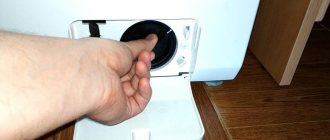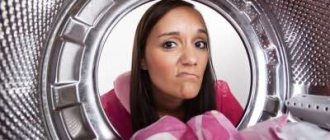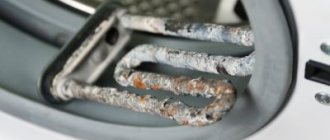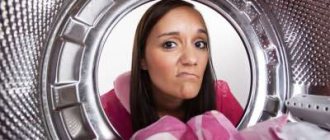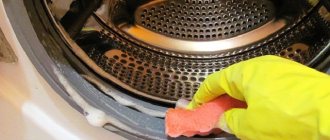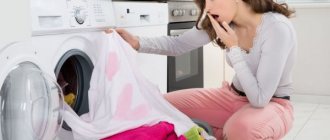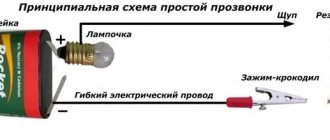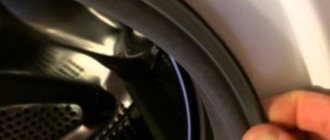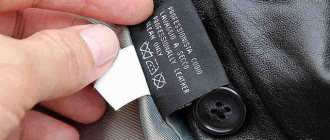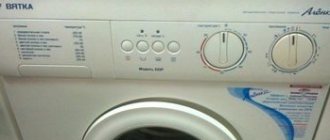From scale From mold At home From dirt Automatic Clean the compartments Clean the pump Simple methods Tips for the home From plaque From dirt Tips suitable for washing machines: Zanussi LG Indesit Ariston Atlant Electrolux Hansa LG Candy (Kandy) Samsung Bosch (Bosch), etc.
Cleaning the washing machine. We extend the service life of the automatic machine. We analyze all the methods of cleaning from dirt, scale, fungus, etc.
We are so accustomed to convenience that now not a single housewife can imagine her life without an automatic washing machine. And only the most low-income families do not have it, where they still wash in a basin, but still plan to buy it.
What could be the reasons for contamination in the washing machine and what can you expect:
- Moisture may cause mold to appear on the rubber seal;
- During operation, scale appears on the heating element;
- Residues of washing powder stick;
- The drain pump filter is dirty;
- Rust or stones appear in the inlet hose filter.
All this leads to an unpleasant odor and rapid breakdown of the washing machine. And in order to avoid damage from dirt, you should periodically clean the car either with special products or with handy ones that you find at home.
How to clean a washing machine filter
If you do not clean the filters in time, then soon after they become dirty and clogged, you can cause a severe flood.
What do you need to clean the filter? Prepare a rag, a flat container and a screwdriver. Find the panel at the bottom (most often it is the socket on the bottom left), open it and unscrew the filter. Before doing this, do not forget to place a flat container and keep a rag ready, since a small amount of water will still spill out from there.
Once you open the filter, remove all dirt and accumulated debris. By the way, sometimes you can find interesting things there). Next, wipe the hole, screw on the filter and close the lid tightly.
How often should preventive maintenance be carried out?
The frequency of preventive measures to combat scale depends on the hardness of the water in your region. But practice shows that for most people, one procedure every six months is enough.
Important!
- Don't use lemon juice! It is less concentrated, contains sugar and other substances, which makes it completely unsuitable for purification.
- Citric acid is often used in combination with other folk remedies, thereby enhancing its properties.
How to clean a washing machine from smells
Sometimes your washing machine may smell musty. This is due to the fact that you could take cheap, poorly dissolving and leaching detergents. They accumulate on the walls and cause an unpleasant odor later.
If you do not dry your car, mold or mildew may appear, which also gives off an unpleasant odor and stains your clothes.
- Always rinse the tray after every third wash.
- If the channel from where the detergent enters the machine is clogged, clean it with a small brush containing chlorine.
- Clean the drain filter
- Clean your washing machine from limescale
Such manipulations will help you get rid of odors and extend the life of even an old washing machine.
And a little about prevention
- Use only as much powder, bleach and conditioner as you actually need (see product manufacturer's instructions). After all, excess detergents do not enhance the result, but simply settle and accumulate inside the washing machine.
- Always remove small items from pockets to prevent them from clogging the drain filter.
- Try not to delay starting the machine if you have already thrown dirty things into the drum. Well, take out clean clothes immediately after washing and send them to dry.
- Try to always keep the car open to prevent mold from growing in it due to high humidity.
How to descale a washing machine
We clean the heating element itself and the washing drum from scale, since this is where the heating elements are located. Over time, mineral deposits of salts and lime adhere to these elements. Essentially, these are Magnesium and Calcium salts. Therefore, the best thing is to remove it with acids. At home it is vinegar and citric acid.
Recipes:
- Clean with vinegar: 2 cups 9% table vinegar, 1/4 cup baking soda. Pour the mixture of water and soda into the powder container, and vinegar into the drum itself. We turn it on for maximum operating time at the highest temperature. If there is a boiling function, use it.
- Citric acid: Citric acid 1-6 packs depending on the contamination. If you haven’t cleaned it for a long time, then more is better. Pour the acid directly into the powder compartment. Turn on the longest wash and temperature mode, as in the first case.
- Soda. 500 grams of baking soda are poured into the drum, and 1 liter of 9% table vinegar is poured into the receiving tray. The program with the highest temperature is set. This option will help you clean not only the tank and heating element, but also the drain channels.
Top 7 best ready-made cleansers
The deposits that form on them pose a huge danger to the internal parts of your unit. Companies involved in the production of washing machines recommend using special preparations to clean the drum, heating element and other parts of the machine.
The cleaning ability of these products is based on the presence of a strong acid in their composition. Therefore, they should be used only when a white coating appears.
We list the most effective drugs that help clean the washing machine from dirt and scale.
Magic Power
It fights well against complex types of scale that have accumulated on the drum and heating element due to prolonged use of the unit. Country of origin: Germany. It is considered one of the most effective remedies.
Particularly suitable for use in regions where the water contains various salts, impurities and has a high level of hardness. The drug contains citric acid.
- It is enough to apply once every 6 months.
- High efficiency.
- Comfortable to use.
- The product contains no aggressive ingredients
Top House
Quite an effective product that perfectly removes dirt and scale from parts of the washing machine. One bottle contains 500 ml of product. This makes it possible to carry out up to five cleanings per year.
- The product is quite economical.
- Ease of use.
Antiscale
Available in powder form. Country of origin: Russia. Cleaning is carried out during a “idle” wash, at a temperature of 30 to 40°C. Two packages of this product are poured into the powder compartment.
It will take about 40 minutes to remove the middle layer of scale. The formula is based on diluted vinegar essence.
Pros:
- Suitable for both cleaning washing machines and removing scale from kettles.
- Does not harm rubber elements.
- Doesn't clog the filter.
- There is no pungent odor left after use.
- Easy to use.
Minuses:
- Cannot be used more than once a month.
- The product is very caustic; you only need to work in it with gloves to avoid chemical burns.
Luxus Professional
Country of origin: Russia. The product is available in the form of a gel, which is easy to use - the product is poured into the powder compartment and the “idle” wash is turned on. Consumers note the cost-effectiveness and versatility of the gel - it is also suitable for cleaning the dishwasher and kettle.
Pros:
- The powder is based on plant components.
- The biological substances contained in the product do not pose a danger to people and animals.
- An excellent choice for those who have a lot of electric heating equipment in their home.
- After use, a pleasant lemon scent remains.
Minus:
- If there are heavy scale deposits, the cleaning process must be repeated.
Calgon
Perhaps “Calgon” can be considered one of the most advertised products. Available in powder or gel format. To clean, the product is placed directly into the drum or poured into the powder tray.
Plus:
- Softens water hardness, thereby preventing scale formation.
Minuses:
- Does not remove scale and dirt from washing machine parts.
- High price.
Complex remedy from Dr. Beckman
The German brand produces a product for comprehensive cleaning of dirt, scale and odors, protecting the insides of a washing machine and other home appliances. The cleaner is offered in liquid form, packaged in a 250 ml plastic bottle.
Using the product, contaminants are removed from hard-to-reach places. The cleaning composition contains components to protect metal and rubber parts from damage.
Kaneyo
A chlorine-based liquid cleaning composition from a Japanese brand is effective for removing mold, soap and dirt deposits from the back surface of the drum. The product has a pronounced antibacterial effect and removes musty odors well. Suitable for all drum type washing machines.
How to clean a washing machine drum
Why might the drum become dirty? There are several options for contamination:
- Sand and dust from dirty clothes
- Grains of sand and particles of rust from the water supply
During washing, these solid particles combine with limescale impurities from the water and gradually stick (settle) on the drum. It is especially difficult to clean the inner, invisible part of the drum from contamination.
When you start cleaning your car, follow these steps:
- Wipe the walls of the drum with a damp cloth, thereby wetting the surface and also removing large dirt;
- Pour baking soda onto a damp cloth and thoroughly clean the drum. Baking soda removes scale, grease and accumulated dirt;
- Leave the soda for half an hour and then wash off the remaining dissolved dirt with a clean cloth;
- Add diluted vinegar, bleach or citric acid to the powder tray. What is at hand;
- Set the maximum wash time at a temperature of 60ºC and without the rinse function;
- After finishing the program and draining the water, put the machine on a double rinse to completely remove any remaining solution in the tank.
This way you can protect your car from wear and tear in time and extend the service life of both the heating element and the tank.
How to soften water?
Soft water is not only known to improve the quality of washing results. It is much safer for the mechanical elements of the SMA. By softening the water, it is possible to help extend the life of parts that come into contact with it. More details:
- Using a special tool. It is characterized by good efficiency and accessibility. The softening composition can be purchased at any store or supermarket that sells household chemicals. They protect mechanical parts from scale formation. However, even the use of special means does not provide a 100% guarantee.
- Washing with high quality powders. Most well-known manufacturers, such as Persil, Ariel and many others, have already taken care of including emollients in their products. Their use improves the quality of washing and protects machine parts from premature wear.
- Mechanical systems. Most effective in the fight for softness. Connect directly to the water supply. These include: membrane and salt filters, magnetic softeners, ion exchange systems.
How to clean an elastic band in the washing machine
The rubber in the machine serves as a seal and also gets clogged like other parts. Both dirt particles and water accumulate under it, which can cause fungus to develop or mucus to form. It’s not very pleasant if dirt from under the elastic gets onto clean linen.
To prevent the formation of deposits, do preventive maintenance after each wash:
- Use a cloth to dry any remaining water under the rubber band;
- Leave the car door open for a while. so that it dries completely;
- Try to ventilate the room itself from moisture where the washing machine is located.
If you already have a fungus, the following ingredients will help you clean it:
- Soda
- Dishwashing liquid
Mix baking soda and dish liquid approximately 1:1. Using a sponge, apply the resulting solution to the entire surface of the elastic inside, rub it and leave for half an hour. Then rinse it thoroughly and wipe with a dry cloth. If the contamination is very strong, then take any disinfectant that does not contain chlorine.
Chlorine-containing cleaners can corrode the rubber seal or deform it.
Deep cleaning
This method is suitable if the machine has not been cleaned for a long time. This method is very aggressive, will require a lot of time and cannot be performed more than once every 3-4 months.
Front washing machine - how to clean (advice from an experienced housewife):
- You will need a borax solution or natural oxygen bleach, 2 tbsp. l. sodium bicarbonate, 2 cups white vinegar, 20 drops tea tree essential oil to fight bacteria.
- I remove the tray dispenser and let it dry, then completely submerge it in hot, soapy water. As soon as the plaque softens, I clean the container with an old toothbrush. I wash it with clean water and return it to its place.
- Place baking soda and borax (or oxygen bleach) into the drum. Set the highest temperature setting for the maximum amount of water. If your machine has a cleaning cycle, use it.
- Once the cycle is complete, pour the vinegar and essential oils into the rinse container and turn on the extra rinse option.
- Remove and clean the filter at the bottom with hot water or vinegar. You can use a soap solution.
When finished washing, dry the drum with a clean microfiber cloth.
As you can see, caring for an automatic washing machine is not difficult, even with heavy soiling. But it is better not to bring the device to this state.
How to clean mold from a washing machine
Mold can appear not only under the rubber seal. If it is in a damp and cool room, then every part can become “infected” with fungus. Constantly wet parts are especially susceptible to infection: the elastic band, the tray and the drain.
If you do not get rid of it in time, then not only the machine, but also the person living in the apartment may suffer. The fungus produces a huge number of bacteria that cause allergies and pulmonary diseases.
How you wash your clothes also affects mold.
- Wash only on cold cycles up to 40°C. This temperature does not kill the fungus, but only creates favorable conditions for spores to reproduce and develop.
- Washing without the use of active bleaching agents. Gentle powders without chlorine and phosphates cannot kill the fungus. But the active substances will help get rid of it even if you decide to bleach your bed linen.
- Using air conditioning. When using it, it is necessary to include an additional rinse to wash away the remaining conditioner from the walls of the machine. The laundry will remain with the same properties that you would rinse once. If you use a one-time rinse, the remaining conditioner will remain on the walls. And this is a favorable environment for the development of mold.
Stages of cleaning the washing machine from mold:
- Wash the tray, rubber seal and other contaminated visible parts of the machine with laundry soap;
- Pour regular white into the dispenser and put it on a long wash;
- In the middle of the cycle, stop the machine for 30-60 minutes;
- Pour 2-3 cups of 9% vinegar into the measuring tank and set to rinse;
- After washing, wipe the machine dry.
This method helps in advanced cases when you need to clean not only externally, but also internally the entire washing machine.
When is cleaning the machine clearly necessary?
How do you know when it's time to clean your machine? This is especially important for housewives who have recently started using this device and have not yet gained the necessary experience.
You should immediately notice a pattern - the more often washing is done at high temperatures, the more often the machine needs to be cleaned of limescale deposits.
Scale accumulated on the heating element (heating element)
If during washing you begin to notice signs of deterioration in its quality, then this is a clear indicator that scale or dirt deposits have already accumulated on the machine parts in contact with water:
- When you remove light-colored laundry from the machine after washing, dark stains are found on it that are difficult to wash even by hand - this is a clear sign of scale accumulation.
- Washing clothes for an excessively long time, exceeding the normal cycle, indicates that there is limescale on the heating element. In this case, energy consumption increases, since such mineral deposits have low thermal conductivity, and it takes much longer to heat the water to the set temperature. Therefore, the washing cycle time increases.
- After washing, white laundry turns gray - this factor also indicates the presence of scale. The explanation is simple: when washing dark clothes, dark fibers are retained on the loose surface of the scale, and dirt and paint from the fabrics are absorbed into its structure. All these dark deposits then end up in the water when washing white clothes, depositing on the fibers.
- An unpleasant odor emanating from the drum or from washed clothes is also a sign of the presence of scale and dirt on the machine parts. The more scale there is, the more actively dirt deposits, fabric fibers and other debris adhere to its rough surface.
If the washing machine has been in use for a year or more, and washing is most often done at temperatures above 60 degrees, and at least one of the above-mentioned signs of contamination has been noticed, then there is nothing to think about! The device needs urgent cleaning!
How to clean a washing machine tray
If you only need to clean the tray, use the following method:
- Remove the tray. This can be done in almost every car. You can simply pull out the tray all the way
- Spray with any universal cleaner;
- Rinse using the hard side of a sponge or a toothbrush;
- Rinse thoroughly and wipe dry.
The tray is the first step to contamination with mold, rust, etc. Try to care for it as often as possible, dry it after each wash, rinse it as soon as you see plaque appearing. And then your washing machine will serve you for a long and faithful service.
Main types of pollution and places of their accumulation
The washing machine is constantly exposed to negative factors. Dirt from laundry, dust settled inside, water with a high content of minerals - all this can cause serious problems.
The main enemies of technology:
- Mold. A washing machine with a warm and humid environment inside is an ideal place for fungus to grow. Mold gives itself away with an unpleasant odor that spreads throughout all elements of the machine and negatively affects the freshness of the laundry after washing. Black spots of fungus can be seen in the powder tray, under the drum rubber, or in hard-to-reach places - on internal parts.
- Contamination from clothes. Along with stale laundry, dust, lint, dirt, hair, etc. get into the machine. Some of the dirt is not washed out during the washing process, but settles on the internal “organs” of the equipment. Over time, you may notice blockages in the hoses or filtration compartment, which lead to an unpleasant odor.
- Scale. The main place of damage is the heating element (heating element). A layer of scale gradually accumulates on it, which can lead to problems with water heating or reduce the overall performance of the equipment. The appearance of scale is associated with the use of “hard” water, the salts of which coat the heating element tubes. Too much plaque can lead not only to damage to the heater, but also to serious malfunctions of other machine mechanisms.
Any type of contamination can cause problems with the washing machine. To prevent serious consequences, it is worth regularly cleaning the external and internal parts of the equipment from dirt deposits.
Traditional methods of cleaning a car
How to clean a washing machine with citric acid
Citric acid is used for light stains, unpleasant odors in the car, and also as a preventive measure for heating element scale and for cleaning the drum. At the same time, if you compare it with expensive purchased products and read the composition, you will see that 75% of the product consists of acid. When compared, the benefits are obvious.
The procedure for cleaning the machine with citric acid:
- 50-100 grams of lemons are placed in a powder tray
- Select the longest washing mode and the highest temperature of 90 degrees
- After finishing the wash, set the machine again for an additional rinse.
If there is still a smell after cleaning, don’t despair. There is an explanation for this:
- You haven’t cleaned your washer for a very long time and after running it, all the plaque hasn’t been removed.
- With constant washing at 40 degrees, bacteria and fungus spread on the walls and it is already difficult to get rid of it
In such cases, repeat the cleaning procedure. After this, wipe the car dry and dry it with the hatch and tray open.
Remember! This is prevention. And it is advisable to use this method no more than once every 6 months.
How to Clean a Washing Machine Using Baking Soda
Soda helps get rid of mold, because when dissolved it creates an alkaline environment, which fungus does not like so much. Most often it is distributed on the sealing rubber, in the drum itself, in the powder tray.
Mode of application:
- Make a paste: half a glass of water and half a glass of soda, mix well to obtain a homogeneous mass.
- Apply a little paste to a sponge and wipe the affected area thoroughly. Try to use rubber gloves during the procedure
- Leave for a while and wipe with a damp cloth
- Turn the machine on to rinse mode
If you take citric acid and soda, you can partially get rid of scale, if the contamination is not severe6
- Take 150 g of citric acid and 2-4 teaspoons of baking soda
- Pour this mixture into the powder tray
- Turn the washing machine on the longest cycle at the highest temperature. When finished, repeat the rinse cycle again.
How to use vinegar when cleaning
Vinegar is used less frequently, but it can also be used for mildew or mildew.
- Pour 9% vinegar into the tray for liquid laundry detergent - 2 cups
- We start the machine at high temperature and select the longest washing mode
- After 10-15 minutes have passed, turn off the washing machine for a couple of hours in order to kill the fungus
- Next, continue washing and additionally set to rinse mode after stopping
- Wipe the entire interior surface and rubber seal with a soft cloth dampened with vinegar solution.
- Wipe the machine dry with a dry cloth and leave to dry with the hatch and tray open.
Interesting! Some housewives add 1-2 tablespoons during washing to soften the water and prevent scale. And if you add apple cider vinegar, you can get a pleasant smell for your laundry.
Cleaning the washing machine with bleach
Bleach, also known as Whiteness, helps fight mold and disinfect the most inaccessible places.
How to properly use bleach when cleaning:
- Pour 100 ml of white directly into the washing machine (drum)
- Turn on the mode with a temperature of 90 degrees for 30-40 minutes
- Then run an extra rinse
Use Whiteness no more than once every six months. When using Domestos, be careful - it tends to foam.
The best chemicals for cleaning automatic machines
If you still trust store-bought products more, then it is better to buy specialized drugs sold in specialized stores. The most purchased and popular ratings among users:
- Topperr 3004 (Germany) – suitable for descaling dishwashers and washing machines. Recommended by Bosh manufacturers.
- Schnell Entkalker (Germany) - quickly helps to get rid of lime deposits on internal elements.
- Antikalk for Washing Machines from Sano (Israel) is a universal gel for the prevention and elimination of small plaque with an antibacterial effect.
- Magic Power (Germany) is one of the best specialized products for washing machines. Available in the form of gel and powder, which effectively removes plaque from heating elements, tanks, and drums.
- Beckmann (Germany) is a universal product that will protect against scale and eliminate unpleasant odors caused by various contaminants. But, like any multi-purpose product, it is good for regular care, but will be ineffective against heavy dirt.
- Filtero 601 (Germany) – works well to remove old scale from the heater and other elements; it is recommended to use 3-4 times a year for intensive cleaning of the machine. Available in 200 g bags for one use.
- Doctor TEN (Russia) and Antiscale (Belarus) are inexpensive drugs that help remove scale from any heating elements.
- Bork K8P1 (Korea) – will clean scale. In stores it is sold in a package of 4 sachets.
- Shumanit Bagi (Israel) – gets rid of scale, limescale, and rust. Cleans surfaces well.
All these products are available in convenient packages in the form of powder or liquid products. I usually buy liquid products that contain bleach, which helps get rid of limescale and mildew.
These products also clean other appliances: irons, dishwashers, etc.
Three ways to deal with scale
There are three options for fighting scale:
- chemical,
- physical,
- technological.
Let's look at each of them in more detail.
Chemical
The basic idea is that a product containing acid is put into the washing machine to remove scale deposits. The machine is activated without laundry, and due to a chemical reaction, the water heating element and the walls of the tank are cleaned.
One of the anti-scale options is Kalgon. But such a remedy does not create an instant effect, especially in cases where the scale is quite strong. The solution turns out to be rather weak and has to be used repeatedly.
The second method is citric acid, the methods of use of which are discussed above. Although the method is popular, it removes scale efficiently. It is recommended to use this product once a year.
It is fair to note that the chemical cleaning option has a negative point - an overdose damages elements made of rubber material.
Physical
This involves installing a magnetic liquid softener - a filter or converter. Install the elements into the water supply system or into the hose of the washing machine.
The manufacturer offers you the following options:
- magnetic softener – removes calcium and magnesium from water. The work is carried out by special magnets that split molecules and prevent scale formation. Such a softener is expensive, but guarantees long-term operation of the machine,
- There are devices that resemble mechanical cleaning filters. One of the varieties is a sedimentation device with a replaceable cartridge, where grains of sand, rust and dirt settle.
Technological
This method of preventing scale formation is recommended for owners of washing machines of the latest releases that have new software - contaminants are removed from them already at a temperature of forty degrees, which helps save electrical energy.
It is necessary to use the washing machine as rarely as possible to wash old clothes. From such things, a huge number of tiny particles get into the water, which can cause harm to the car.
How to Clean a Top Loading Washing Machine
Top-loading machines also need to be cleaned periodically, as they accumulate even more bacteria, mucus and mold.
- We use the longest and highest temperature washing cycle
- Add 2-3 cups of 9% vinegar to the water, after a couple of minutes add half a cup of soda
- This starts the reaction. Leave the equipment in this form for 1.5-2 hours on pause
- While the machine is standing, wash the outside of it with a vinegar solution with a soft cloth.
- After the time has passed, turn on the machine and finish washing
- Wipe the inside with a cloth to remove any remaining dirt.
The best protection for household appliances is keeping not only the body clean, but also the cuffs and insides. As soon as the automatic parts become clogged, problems may appear: leaks, failure. Therefore, do not forget to take preventive measures that are easy to do yourself. Below is a small instruction that you need to know before launching our assistant to prevent frequent repairs.
Elements of SMA that require mandatory prevention
Cleaning the pump filter
Most washing machine users rarely pay attention to cleaning the filter. Although in fact, this is the procedure that every wash should end with. Its necessity is indicated by the presence of an unpleasant odor.
Its source is the accumulation of moisture in the filter, which leads to the growth of bacteria, mold and mildew. In addition, dirt, threads and other “garbage” can accumulate in it.
Cleaning the pump filter
Manufacturers write about how to properly clean the filter in the instructions for the corresponding washing machine model. Their location and opening method will vary depending on the brand, but generally it is located on the lower right. In inexpensive models it is covered with a plastic strip with latches (in Indesit, for example), in others it is located behind a retractable lid.
Expert opinion
I work in the household appliance repair industry. Extensive experience in restoring washing machines and dishwashers.
Ask a Question
Important! The filter is not available in some models of the compact class (“Kandy”), which are located under the sink, and in a number of washing machines with vertical loading of laundry (“Electrolux”).
Cleaning the cuff
During operation of the washing machine, dirt particles accumulate in the cavity of the cuff and drum. Constant contact with water can lead to the formation of mold and the accumulation of limescale deposits. Some SMA models have an automatic cleaning function, but most do not.
Do you wash by hand?
Oh yes! No
It is advisable to clean the cuff together with washing other structural elements. In order to do this, you will need rubber gloves, cleaning agent and a dishwashing sponge.
Progress:
- The cleaning agent is applied to the cuff using a sponge.
- For effective cleansing, the substance should be left for 20-30 minutes. Then wipe with a sponge.
- After this, you need to start the rinse mode to wash away any remaining dirt and detergent particles.
- After this, you should wipe the drum with a dry and clean cloth.
This method is suitable for preventive cleaning. However, mold may form in the cuff. To combat it, it is advisable to use proven folk methods. For example, lemon juice, citric acid, soda and vinegar.
All of them are equally effective in combating fungus. After carrying out the manipulations, it is recommended to wash off the remaining products by running the washing mode at high temperature.
Fungal spores on rubber band
How often is washing machine maintenance needed?
On many forums, craftsmen advise performing preventive cleaning once a week. Such frequent procedure is not necessary. It is enough to do this once every six months or as needed.
You need to clean the filter, ventilate the drum, wipe the cuff and powder container after each wash. These preventive measures will help avoid the appearance of unpleasant odors and fungus.
Glossing
The aesthetically pleasing appearance of household appliances in the home is very important. To preserve it, you need to wipe the surface of the device with a clean, dry cloth after each wash. Stubborn stains can be easily dealt with using any detergent and a soft sponge.
Important! Under no circumstances should you try to clean the surface of the washing machine with the hard side of a kitchen sponge. It will scratch the enamel, and this will lead to permanent surface contamination.
To keep your washing machine looking perfectly clean, you can wipe the outside of it using glass cleaner.
